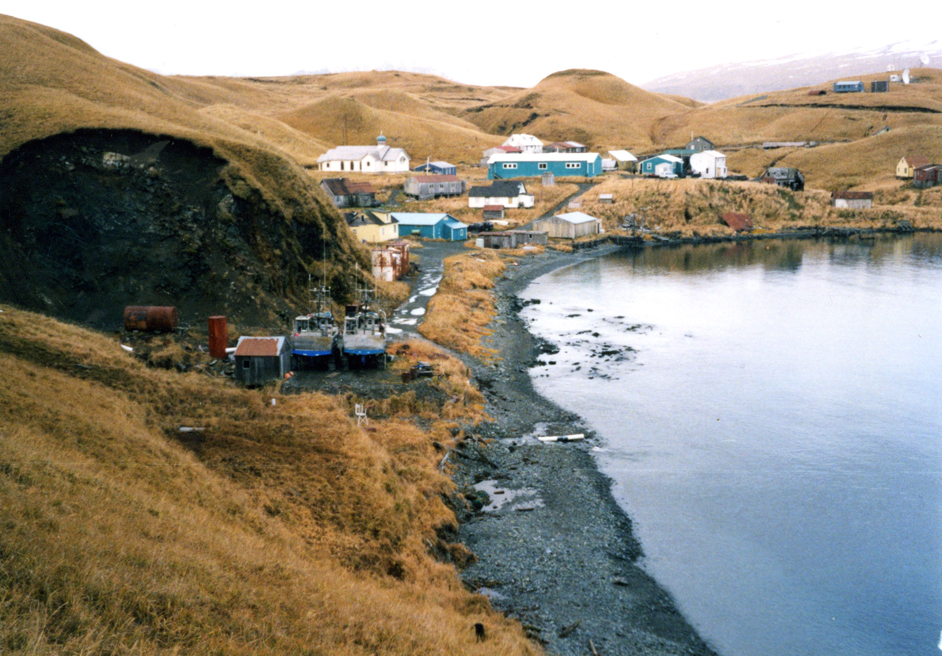Retired Anchorage doctor Nancy Elliott Sydnam’s book “Sideways Rain” is fascinating in its telling of Sydnam’s 20 years providing medical care to Alaska’s farthest flung communities, villages on the Aleutian and Pribilof Islands.
Before getting into the details of the challenges she faced, friends she made and beautiful country she saw, however, southern Kenai Peninsula readers will be immediately struck by the mention of familiar names and impact people from this area had on Sydnam’s life.
“My love affair with the Alaskan bush began in 1961 when I was privileged to participate as a general practice physician in a month-long medical safari with Milo Fritz, a marvelous eye, ear, nose and throat physician,” writes Sydnam in the first sentence of the book’s first chapter.
The late Fritz and his wife, Betsy, a nurse, once operated a clinic in the Anchor Point area. A street named in his honor is the address for the Anchor Point firehall, the Veterans of Foreign Wars Post 10221, the Anchor Point Senior Center and Fireweed Meadows golf course.
Concerned with the number of hearing infections and hearing problems plaguing Bush residents, Fritz suggested the Native Health Service do tonsillectomies and adenoidectomies, T&As, on all problem cases. Rather than bring the estimated 250 cases into Anchorage, Fritz performed the surgeries in the villages.
“In 30 providentially sunny days from 3 June through 3 July, 1961, my wife, a nurse, and Mr. John Spahn, a Guild Optician, and I held an itinerant eye, nose and throat and dental clinic in the Yukon Valley of Alaska,” Fritz wrote for the “Northwest Medicine,” December 1961. “We were accompanied on this safari by Nancy Sydnam, a general practitioner of Anchorage.”
Sponsored by the American Cancer Society, Sydnam went along to perform breast exams and Pap smears on as many village women as possible. Her assignment faced some interesting obstacles including the lack of an exam table. Sydnam’s solution to that problem illustrates the problem-solving skills that would serve her well in the future.
“I had to resort to using the bishop’s desk,” she writes in “Sideways Rain. “Each Episcopal village has a special chair or desk for the bishop to use when he visits. Customarily it is for his use only, though he is there for only a few days at a time. Knowing Bishop Gordon, I was sure he wouldn’t mind, but I must admit to never telling him.”
By the end of that trip, Fritz had performed more than 125 T&As without a single complication. In addition to assisting Fritz with pre-ops and doing exams and Pap spears for village women, Sydnam found herself impacted by those she met.
“Another feeling was gratitude for the opportunity to spend an entire month with people who related so well to living on this earth as part of this earth, rather than as masters of it,” she said of the experience. “No wonder I refer to this as my love affair with the Alaskan Bush.”
In 1988, Sydnam had developed a private practice as a family physician in Anchorage when her path crossed that of Don Hudson, an emergency room doctor in charge of providing physicians on a rotating basis to supervise the Iliuliuk Clinic in Unalaska. Wrestling with her decision, Sydnam recalled following her paternal grandfather’s advice to “just figure out how” when she took on the challenge of medical school, followed by relocating to Alaska in the mid-1950s. It was the same advice she relied on when she accepted Fritz’s offer. With those words urging her on, Sydnam accepted Hudson’s offer.
Scattered throughout “Sideways Rain” are poems penned by Sydnam that serve as snapshots of her experiences. Her observations of the Unalaska-Dutch Harbor airport, the area’s strong winds and the rain that “comes down prone” are captured in “Airport” and explain the book’s title.
Also scattered throughout the book’s 306 pages are photographs documenting Sydnam’s time in the Aleutians and working with the Aleutian/Pribilof Islands Association on the Pribilofs and at Unalaska, Umnak, Atka and Adak. There are the landscapes that she comes to love, the airplanes on which she commuted thousands of miles and the people with whom Sydnam has formed such close bonds that some made a point to attend the roll-out of her book in Anchorage in February.
Toward the end of the book, shortly before Sydnam’s retirement at the age of 81, she mentions Dr. Martha Cotten. Like, Sydnam, Cotten also practiced in the Aleutians.
“She is from Halibut Cove near Homer, Alaska, and I know her father, Clem Tillion,” Sydnam writes. “I like her very much and she knows the system well…”
In the forward of “Sideways Rain,” author Raymond L. Hudson described Sydnam’s book as accomplishing “an almost impossible task” by “its uncompromisingly frank yet compassionate portrait of one of the most diverse and a remote regions of Alaska.” To that, southern Kenai Peninsula readers can add that the familiar names make us all part of the same region.
McKibben Jackinsky can be reached at mckibben.jackinsky@homernews.com.



